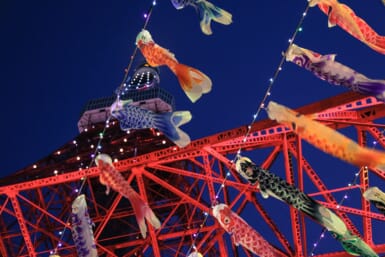Sonic the Hedgehog turns 30 today and to celebrate we thought we’d look at some Japanese video game characters who have become global icons. As well as the speedy blue hedgehog, we’ve included three of Nintendo’s biggest names, a martial arts expert, a cute character inspired by a pizza and an even cuter Pokémon. You can probably guess which one.
1. Pac-Man
In the 1970s Toru Iwatani felt arcades were gloomy places where only boys went to hang out. Wanting to do something about it, the then 25-year-old Namco employee decided to create a game with women in mind. He felt inspired looking at a pizza with a slice taken out and that’s when he came up with Puc-Man. The cute yellow character then debuted at a cinema complex in Shibuya on May 22, 1980, to favorable reviews. It was released nationwide in July of that year and proved a great success, overtaking Space Invaders as the number one arcade game in the country.
Realizing the game’s potential, Namco began initializing plans to introduce it abroad. One issue that concerned distributors, however, was the name. They were worried about kids replacing the “P” with an “F” on the machines. As a result, they decided on Pac-Man. The game was released worldwide in December of 1980 and the following year it was the highest-grossing arcade game in America. It now sits as the most successful coin-operated arcade game of all time. In 1999, Billy Mitchell became the first person to get the perfect score of 3,333,360 points. He also holds the record for the best score in our next entry.
2. Donkey Kong
By 1981 Nintendo’s attempt to make a splash in America was failing. Three thousand arcade cabinets of the game Radar Scope had been shipped to the States yet two-thirds of them sat unsold in the company’s warehouse. They subsequently turned to Shigeru Miyamoto to convert the leftover hardware into a new game. He had provided the artwork for Radar Scope as well as the damsel in distress arcade game Sheriff. His initial idea was a love-triangle style plot involving Popeye, Bluto and Olive Oyl. Unfortunately, Nintendo failed to secure the rights to use them. Or perhaps they were fortunate.
Rather than giving up on the idea, Miyamoto simply changed the characters. Popeye became a carpenter named Jumpman trying to save Olive who was turned into Lady. The villain Bluto, meanwhile, assumed the form of an ape named Donkey Kong who was stubborn and stupid. Credited as the first platform game to feature jumping and a plot, it was an immediate hit. By its second year the gorilla had made Nintendo $100 million. Wanting a slice of the pie, Universal City Studios took the gaming company to court for trademark infringement of King Kong. The judge ruled in Nintendo’s favor. The Japanese company later trademarked the phrase: “It’s on like Donkey Kong.”
3. Mario
While Donkey Kong proved very popular, his nemesis became even more famous. The little man with a hat and mustache was originally called “Jumpman” in the English version of the game. Miyamoto, however, saw him as “a solid character,” he could continue using for cameo appearances and thought “an imposing name like Mr. Video would work best.” Fortunately, in the States they’d come up with something much better. Warehouse landlord Mario Segale had confronted Nintendo of Japan president Minoru Arakawa about back rent. After a heated discussion, he agreed to give them extra time to pay. As a gesture of the company’s appreciation, they decided to name the character after him.
He was renamed Mario ahead of the release of Donkey Kong Jr. in 1982. A year later the arcade game Mario Bros. came out. Rather than a carpenter, the main character was changed to a plumber as much of the action took place in underground settings. He was also given a younger fraternal twin brother named Luigi. The two of them were sent to investigate the sewers of New York after creatures were found down there. In 1985, Super Mario Bros. was released for the NES (commonly known as the Famicom) with the protagonists attempting to save Princess Toadstool from Bowser. With over 600 million units sold worldwide, Mario is currently the best-selling video game franchise of all time.
https://www.youtube.com/watch?v=1FwoEgUBgE0
4. Link
On February 21, 1986, Link made his debut in the Nintendo action-adventure game The Legend of Zelda. An elf-like boy, he was designed by Takashi Tezuka who dressed him in a green tunic and gave him pointy ears, resembling Peter Pan. Tezuka created the game along with Miyamoto. Both were inspired by J. R. R. Tolkein’s The Lord of the Rings novels. Instead of a ring, though, they chose the Triforce (a sacred golden relic) as the focus of the plot. The one who got hold of the three equilateral triangles would then be bestowed with godlike powers.
In the first game, the antagonist Ganon invades the fantasy land of Hyrule and steals the Triforce of Power. Princess Zelda – named after American socialite, novelist and painter Zelda Fitzgerald – prevents him from acquiring the Triforce of Wisdom by hiding eight fragments of it in underground dungeons before she’s kidnapped. Players control Link who sets out to get hold of the eight fragments and rescue the damsel in distress. The third triangle – the Triforce of Courage – first appears in Zelda II: The Adventures of Link. There have been 19 installments so far. By March of this year, The Legend of Zelda franchise had sales in excess of 117 million.
5. Ryu
In 1987, famed game developer Capcom produced its first competitive fighting game. Initially made for arcades, Street Fighter pitted players against computer-controlled opponents in a series of one-on-one matches. There was also the option of a single match against another player. The aim was to knock your adversary out within 30 seconds. If the time ran out, the fighter with the most energy left was declared the winner. The face of the game was Ryu. Players controlled the Japanese martial artist to take on fighters from five different nations. In a two-player game, Ryu competed against his sparring partner, Ken Masters.
Ryu was created by Manabu Takemura and Takashi Nishiyama. He was named after the latter as Takashi can also be read as Ryu in kanji. Nishiyama drew inspiration from the kung fu manga turned anime series and live-action film Karate Master which was written by Ikki Kajiwara. Starring Shinichi “Sonny” Chiba, the story was based around the life of Korean-born martial artist Masutatsu Oyama (Choi Young- Eui). A legendary figure, he founded Kyokushin Karate which is considered the first and most influential style of full contact karate. Like Ryu, he would often disappear to train alone in the mountains.
6. Sonic the Hedgehog
At the beginning of the 1990s, Nintendo dominated the gaming world in America, boasting a 90 percent share of the market. Sega was battling it out with various companies for the other 10 percent of the pie. Yet, despite being worlds apart, the lesser-known game developer was determined to go toe-to-toe with its more powerful rival. Executives believed the only way to break up Nintendo’s monopoly was to create a character that could compete with Mario. Alex Kidd – a former unofficial mascot of the corporation – wasn’t seen as being right for the task. An internal contest was subsequently held to come up with something unique for a flagship game on the Sega Genesis.
The contest was won by Yuji Naka and Naoto Ohshima. The former created the original tech demo around which the game would be played while the latter turned the prototype, which was just a ball without any specific features, into a blue hedgehog. Originally called Mr. Needlemouse, the design was reportedly based on a mix of Felix the Cat and Mickey Mouse. The red shoes, meanwhile, were inspired by the cover of Michael Jackson’s Bad album. The speedy blue character debuted as an air freshener in the arcade racing game Rad Mobile. The first Sonic the Hedgehog game was then released on this day in 1991. By the end of that year, it had sold two million copies worldwide.
7. Pikachu
The cute little yellow character debuted in the first ever Pocket Monsters game, released on February 27, 1996. Though not necessarily the most popular with fans of Pokémon – it finished down at number 44 in a poll by Reddit asking people for their favorite monster – Pikachu is undoubtedly the star of the franchise. The initial idea was to have it as a joint-lead character alongside Clefairy. In fact, it was the star-shaped pink creature who was chosen as the primary mascot. However, when the animated series came out, Pikachu took over the role as it had a bigger appeal to female viewers. Its color was another factor as yellow is easier for children to recognize from a distance.
Atsuko Nishida is the woman responsible for creating Pikachu while Ken Sugimori finalized the design. Speaking to the Yomiuri newspaper, Nishida said she created the puffy cheeks to look like a squirrel as that was the rodent she was into at the time. Others felt it looked more like a mouse, hence the name. The “chu” part comes from the Japanese onomatopoeic phrase “chuchu” which refers to the squeaking noise a mouse makes. “Pika” is based around the onomatopoeia “pikapika” which means glittering. In 2019, the movie Detective Pikachu became the second highest grossing video game film adaptation of all time behind Warcraft.
*Feature image by Anna Petek









